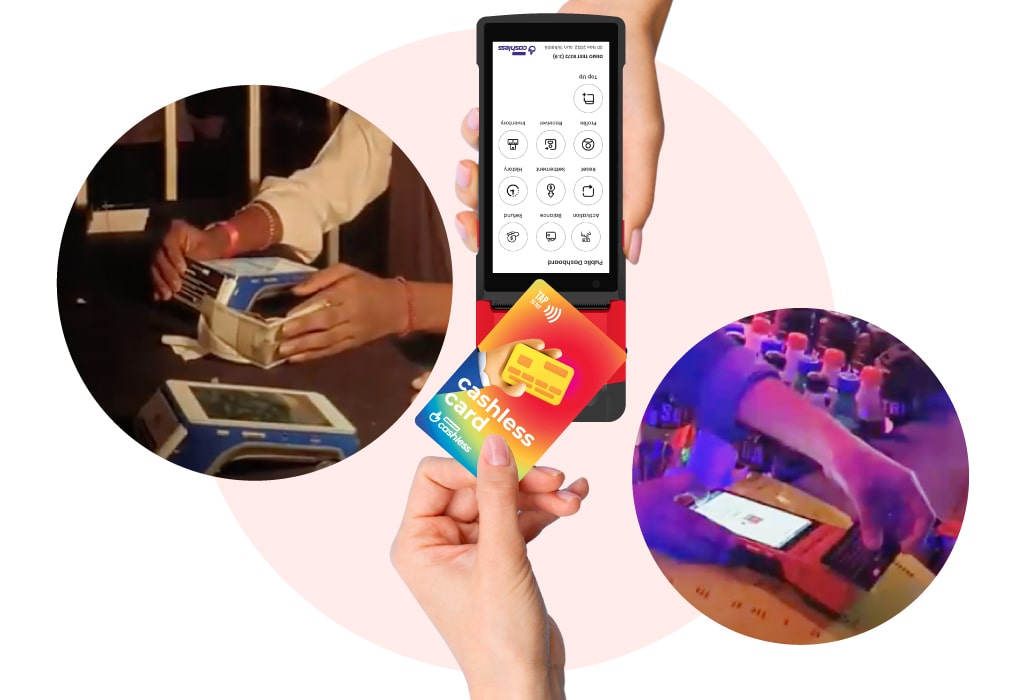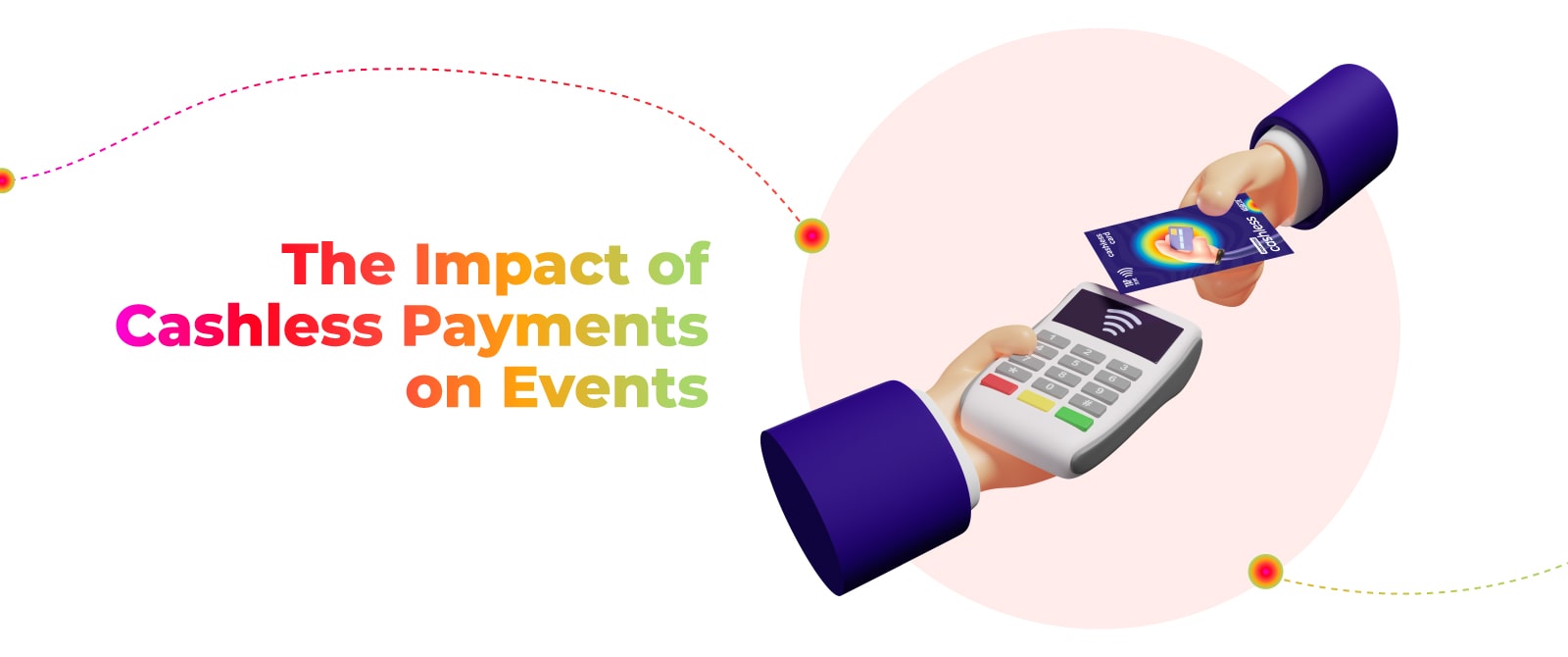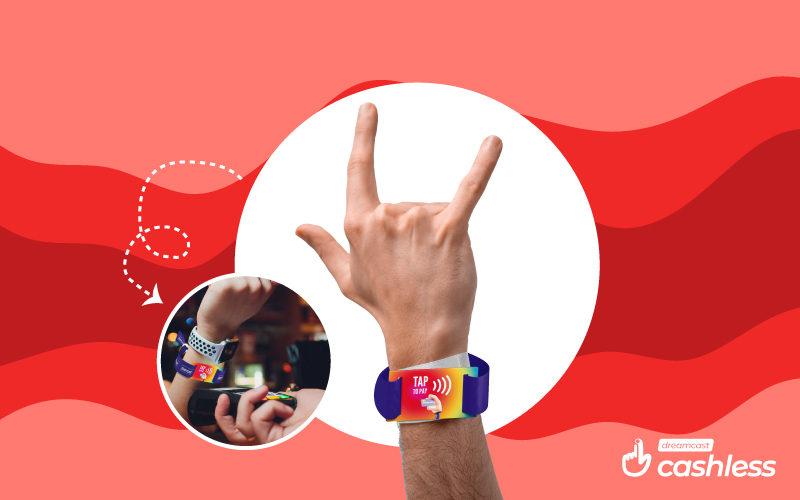The cashless payments at events have emerged as a transformative force, reshaping the way attendees and organizers engage and experience events. This paradigm shift from traditional cash transactions to digital, contactless, and seamless payment methods has profound implications for various stakeholders. In this article, we’ll explore the impact of cashless payments on events, delving into the challenges and benefits associated with them.
Understanding the Cashless Revolution

1. The Evolution of Event Payments
Traditionally, events have long queues at ticket counters, cash exchanges for food and merchandise, and the cumbersome handling of physical currency. The transition to cashless payments represents eliminating this conventional model, introducing a new era of efficiency, convenience, and enhanced experiences.
2. What Constitutes Cashless Payments
Cashless payments encompass a spectrum of digital transaction methods, including RFID wristbands, and contactless payment systems. These methods eliminate the need for physical cash, offering attendees a myriad of options for seamless transactions within the event environment.

The Benefits of Cashless Payments for Events
There are a lot of benefits that come with cashless payments for events and attendees, whether it is making a seamless event experience or streamlining operations for organizers. Let’s take a look:

1. Enhanced Attendee Experience
a. Speed and Efficiency
Cashless payments at events drastically reduce transaction times, allowing attendees to move swiftly through ticketing, entry gates, and purchase points. This increased speed contributes to a seamless and enjoyable event experience.
b. Convenience
Attendees no longer need to carry large amounts of cash or worry about exact change. With cashless options, they have the convenience of making purchases with a simple tap or swipe, enhancing their overall comfort.
2. Streamlined Operations for Organizers
a. Reduced Queues and Congestion
Cashless transactions streamline queues at various points within the event, from ticketing booths to concession stands. This not only improves the attendee experience but also reduces congestion and enhances overall safety.
b. Real-Time Data Insights
Digital transactions generate real-time data, offering event organizers valuable insights into attendee behavior, preferences, and spending patterns. This data-driven approach enables organizers to make informed decisions for future events, optimizing offerings and layouts.
3. Increased Security Measures
a. Fraud Prevention
Cashless payments at events come with built-in security features such as encryption and authentication protocols. This helps in reducing the risk of fraud or theft associated with physical cash transactions.
b. Lost or Stolen Cards/Wristbands
In the event of lost or stolen cards or wristbands, the associated funds can be easily frozen or transferred to a new account, providing an additional layer of security for attendees.
4. Improved Vendor and Sponsor Engagement
a. Enhanced Visibility and Branding
Cashless payments at events often come with branding opportunities for sponsors, vendors, and partners. This increased visibility contributes to a more engaging and mutually beneficial relationship.
b. Streamlined Vendor Operations
Vendors benefit from quicker transactions, reduced cash handling, and the ability to focus on providing quality products or services, leading to a more efficient and satisfying experience for both vendors and attendees.
5. Environmental Sustainability
The shift to cashless payments aligns with broader sustainability goals. Reduced reliance on paper tickets and physical currency contributes to a more eco-friendly event environment, appealing to environmentally conscious attendees and organizers.

Implementing Cashless Payments at Events: Strategies and Best Practices
While a cashless society fosters many benefits for events, implementation requires strategy and planning. Here is a strategy to make events cashless.

1. Comprehensive Communication
The successful implementation of cashless payments begins with clear and comprehensive communication. Event organizers must inform attendees well in advance about the shift to cashless transactions, providing detailed instructions on available payment methods and their benefits.
2. Collaborative Partnerships
Event organizers should collaborate closely with payment service providers, sponsors, and vendors to ensure a seamless integration of cashless systems. This involves thorough testing, training sessions, and ongoing support to address any issues that may arise during the event.
3. Diverse Payment Options
To cater to a broad audience, events should offer diverse payment options, including credit/debit cards, mobile wallets, and RFID wristbands. This ensures that attendees can choose the method that aligns with their preferences and technological comfort.
4. Accessibility Considerations
Accessibility is paramount in implementing cashless payment systems. Organizers must ensure that the chosen methods are accessible to individuals with disabilities and provide alternative options for those who may face challenges with digital transactions.
5. Education and Support Services
Event staff should be well-trained to assist attendees with any questions or issues related to cashless payments. Information booths, signage, and online resources can help educate attendees on the benefits and usage of cashless systems.
Challenges and Considerations
There are quite a few challenges associated with cashless payments for events apart from the strategies it offers:
1. Technological Barriers
While cashless systems offer numerous benefits, there may be technological barriers for certain attendees, particularly older individuals or those less familiar with digital technologies. Events must strike a balance to ensure inclusivity.
2. Connectivity Concerns
Events held in areas with limited network coverage may face challenges with connectivity for cashless transactions. Organizers should anticipate and address such concerns to prevent disruptions.
3. Privacy and Data Security
As with any digital transaction, privacy, and data security are critical considerations. Events must adhere to stringent data protection regulations and implement robust security measures to safeguard attendee information.
4. Cost of Implementation
The initial investment in implementing cashless payment systems can be a concern for event organizers, especially for smaller events with limited budgets. However, the long-term benefits and efficiencies often outweigh the upfront costs.
The Future of Cashless Payments in Events

1. Integration with Emerging Technologies
The future of cashless payments at events and festivals is likely to involve deeper integration with emerging technologies. This could include advancements in mobile payments, biometric authentication, and the exploration of blockchain for enhanced security.
2. Enhanced Personalization
As cashless systems continue to gather data on attendee preferences and behaviors, event organizers can leverage this information to deliver more personalized experiences. Tailored recommendations, exclusive offers, and targeted promotions can enhance the overall event journey.
3. Augmented Reality Experiences
The integration of augmented reality (AR) into cashless systems could provide attendees with interactive maps, virtual guides, and immersive experiences tied to specific points of interest within the event space.
4. Global Standardization
As cashless payments become increasingly prevalent, there may be a move toward global standardization of systems and protocols. This could simplify the experience for attendees who frequently attend events in different regions.
FAQS
Cashless payments at events typically involve the use of technology such as RFID wristbands, or contactless cards. Attendees link their preferred payment method to these technologies, allowing for seamless transactions by tapping, waving, or scanning at designated points within the event.
Yes, cashless payments are designed with security in mind. They often include encryption, authentication, and other security measures to protect attendee information and transactions. Lost or stolen cards/wristbands can be easily managed to prevent unauthorized use.
Yes, cashless payments can be adapted for various types of events, including concerts, festivals, conferences, and sporting events. The suitability depends on the preferences of attendees and the goals of the event organizers.
The advantages of cashless payments at events include:
Faster transactions and reduced wait times.
Enhanced attendee experience with seamless entry and purchases.
Streamlined operations for event organizers.
Real-time data insights for better decision-making.
Increased security and reduced risk of theft or fraud.






